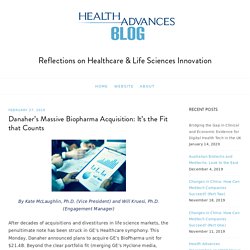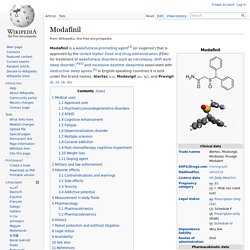

Danaher’s Massive Biopharma Acquisition: It’s the Fit that Counts – Health Advances Blog. By Kate McLaughlin, Ph.D.

(Vice President) and Will Kruesi, Ph.D. (Engagement Manager) After decades of acquisitions and divestitures in life science markets, the penultimate note has been struck in GE’s Healthcare symphony. This Monday, Danaher announced plans to acquire GE’s BioPharma unit for $21.4B. Beyond the clear portfolio fit (merging GE’s Hyclone media, Wave bioprocess bags, Amersham chromatography offerings, FlexFactory single use systems, and Danaher’s Pall filters under one umbrella), the whopping 17x EBITDA multiple indicates Danaher sees a bright future in research and bioprocessing. Over its 100-plus years, GE has become one of the largest companies in the world by aggregating businesses in a diverse variety of sectors, from lighting to aviation to healthcare.
So what can others aiming to span healthcare markets learn from GE’s experience, and how could Danaher be different? Like this: Like Loading... Designing the Death of a Plastic. 3rd Anti-CGRP Treatment Galcanezumab Approved for Migraine. New treatment, galcanezumab (Emgality™), designed to inhibit CGRP, reduce migraine frequency Eli Lilly and Company announced late September 2018 that the U.S.

Food and Drug Administration had approved galcanezumab (Emgality™) for preventive migraine treatment in adults. This announcement comes a week after the FDA approved Teva Pharmaceutical’s fremanezumab-vfrm (AJOVY™) for migraine treatment, making it the third anti-CGRP treatment on the market. “The need for improved preventive treatment has been a long-standing priority,” said American Migraine Foundation Director Nim Lalvani. “These breakthrough treatments in the anti-CGRP class provide much-needed hope for our community of patients living with migraine.” What is CGRP? CGRP is a protein known for causing the pain in migraine, and all three FDA-approved treatments rely on monoclonal antibodies designed to target CGRP or its receptor in trigeminal pain pathways.
Women's Pain Is Different From Men's—the Drugs Could Be Too. The Hidden Costs of Automated Thinking. Like many medications, the wakefulness drug modafinil, which is marketed under the trade name Provigil, comes with a small, tightly folded paper pamphlet.

For the most part, its contents—lists of instructions and precautions, a diagram of the drug’s molecular structure—make for anodyne reading. The subsection called “Mechanism of Action,” however, contains a sentence that might induce sleeplessness by itself: “The mechanism(s) through which modafinil promotes wakefulness is unknown.” This approach to discovery—answers first, explanations later—accrues what I call intellectual debt. It’s possible to discover what works without knowing why it works, and then to put that insight to use immediately, assuming that the underlying mechanism will be figured out later.
In some cases, we pay off this intellectual debt quickly. In the past, intellectual debt has been confined to a few areas amenable to trial-and-error discovery, such as medicine. Consider image recognition. Methamphetamine Alters Brain Structures, Impairs Mental Flexibility. A new study adds to the copious existing evidence that chronic exposure to addictive drugs alters the brain in ways that make quitting difficult.

NIDA-supported researchers showed that, in monkeys, methamphetamine alters brain structures involved in decision-making and impairs the ability to suppress habitual behaviors that have become useless or counterproductive. The two effects were correlated, indicating that the structural change underlies the decline in mental flexibility. Human chronic methamphetamine users have been shown to differ from nonusers in the same ways that the post-exposure monkeys differed from their pre-exposure selves. The researchers’ use of monkeys as study subjects enabled them to address a question that human studies cannot: Did the drug cause those differences, or were they present before the individuals initiated use of the drug?
Modafinil. Modafinil is a wakefulness-promoting agent[3] (or eugeroic) that is approved by the United States' Food and Drug Administration (FDA) for treatment of wakefulness disorders such as narcolepsy, shift work sleep disorder,[4][5] and excessive daytime sleepiness associated with obstructive sleep apnea.[6] In English-speaking countries it is sold under the brand names: Alertec (CA), Modavigil (AU, NZ), and Provigil (IE, ZA, UK, US).

Medical uses[edit] Approved uses[edit] In 1998, modafinil was approved by the U.S. Food and Drug Administration[7] for the treatment of narcolepsy and in 2003 for shift work sleep disorder and obstructive sleep apnea/hypopnea[8] even though caffeine and amphetamine were shown to be more wakefulness promoting on the Stanford Sleepiness Test Score than modafinil.[9] EEG studies indicate caffeine, amphetamine, and modafinil to all be theta wave reducing but only modafinil to be Alpha wave promoting during wakefulness as well as theta wave increasing during sleep.[10]
How Marijuana Affects Memory: It's Not The Neurons. Getting mice stoned can actually result in important scientific discoveries.

Research published in March in Cell magazine reveal how marijuana impairs working memory, the short-term memory we use to hold on to and process thoughts. The classic example is of the stoner who forgets the point he was making, mid-sentence. To study exactly how cannabis affects working memory in such a fashion, Giovanni Marsicano of the University of Bordeaux in France and his colleagues removed cannabinoid receptors from neurons in mice, reports Ruth Williams at Scientific American.
These receptors are proteins that respond to marijuana's chief psychoactive ingredient, THC (tetrahydrocannabinol). The mice whose cannabinoid receptors had been removed from their neurons were just as forgetful as regular mice when given THC; that is to say, they were just as bad at memorizing the position of a hidden platform in a water pool.
How Hemp Got High. If Genome Biology had been launched today, instead of 11 years ago, it might well have been given the alternative title of "Transcriptome Biology".

While Genome Biology captured the millennial zeitgeist of genomics brought about by the project(s) to sequence the human genome, the breathtaking progress of this field in the intervening decade has brought us to a new frontier: the transcriptome. The development of RNA-seq, which applies high-throughput next-generation sequencing technology to cDNA generated from RNA samples, has resulted in an explosion of transcriptome sequences. The Medical Biochemistry Page. Health Sensitivities. Food Masses. Intervention.ally.
Nutrition Health. Organics. Supplemental Awareness. Health Research. HEALTH. Labs Researchers. SCIENCE Breakthroughs.